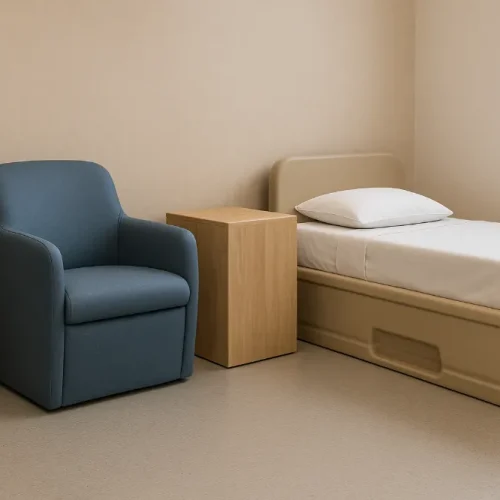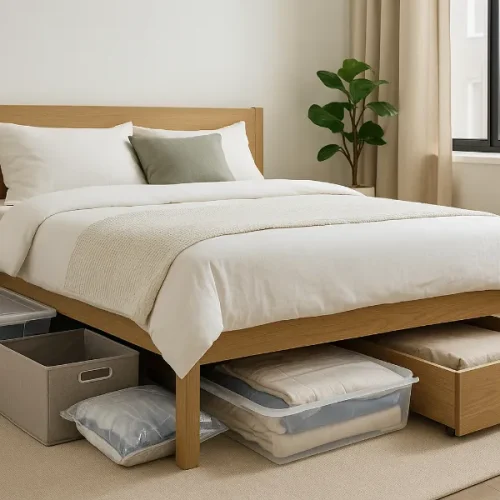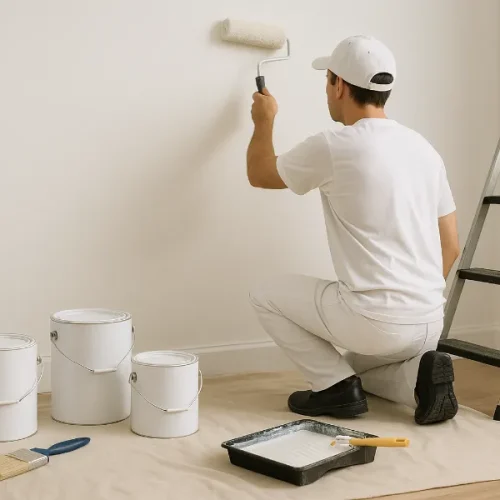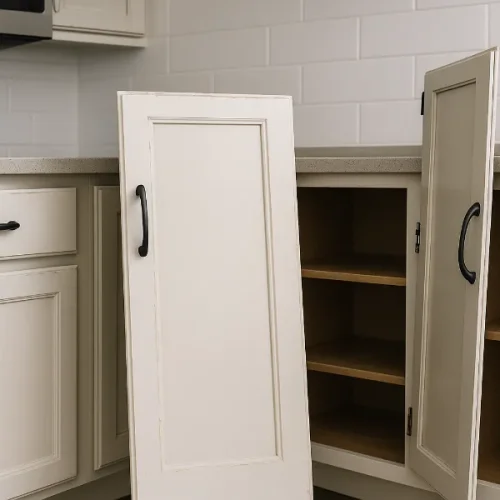
For many people, a bed is more than just a place to sleep. It’s a piece of furniture that influences the overall comfort, style, and functionality of a bedroom. One small but powerful accessory that can instantly transform how a bed functions is the bed frame riser. While often overlooked, bed frame risers are surprisingly versatile: they can create valuable under-bed storage solutions for small apartments, improve accessibility and ergonomics, protect flooring, and even contribute to a more visually balanced room design.
This article explores what bed frame risers are, why people use them, the different types available, how to choose the right height and material, how to ensure stability and safety, and ways to maximize the benefits once they’re installed. Whether someone is living in a compact studio, adapting to mobility needs, or simply refreshing a bedroom layout, bed risers can be a practical and affordable solution.
What Bed Frame Risers Are and Why They’re Used
Bed frame risers are supportive blocks or lift devices placed under the legs or support structure of a bed frame to raise the bed off the floor. They typically come in sets of four or six, depending on the frame’s support points. By adding anywhere from one to twelve additional inches of height, risers open up a range of practical benefits.
The most common reason people use bed risers is storage. The area below the bed can become some of the most valuable space in the room. Raising the bed height allows for rolling drawers, fabric bins, seasonal clothing in storage bins, luggage, or hobby equipment to fit neatly beneath. For college students, renters, or anyone organizing a bedroom with limited floor space, this can be a game-changing way to stay clutter-free without adding additional furniture.
Significant Reason is Comfort and Ergonomics.
The height of a bed influences how easily someone gets in and out of it. A bed that sits too low may require bending or knee strain, whereas a bed that’s slightly elevated can make movements feel more natural. This is particularly meaningful for individuals working to reduce knee strain or support a healthier ergonomic sitting and standing posture. The National Institute on Aging notes that adjusting everyday environments can help support safe mobility and independence, especially for older adults.
Raising the bed can also improve airflow beneath the mattress. Better airflow around memory foam mattresses can help reduce trapped heat and moisture, contributing to better mattress longevity and comfort. Indoor ventilation and humidity management are also key parts of maintaining healthy indoor environments, as noted by the U.S. Environmental Protection Agency: https://www.epa.gov/indoor-air-quality-iaq
Beyond practicality, some people raise their beds for visual appeal. A taller bed can better complement surrounding furniture and support bedroom layout balance and visual proportion choices used in interior design.
Types of Bed Frame Risers
Bed risers come in a variety of materials and designs, each suitable for different needs.
Plastic Risers: Lightweight, budget-friendly, and commonly available. Reinforced plastic risers are best for heavier beds.
Wood Risers: Offer a natural look, blend with existing furniture, and reduce noise caused by shifting.
Metal Risers: Provide the strongest long-term support and are ideal for heavy mattresses or adjustable bed frames.
Adjustable Height Risers: Allow experimentation with bed height and are useful when needs change over time.
Risers with Built-In Power Outlets or USB Ports: Useful for charging devices or running equipment without visible cords stretching across the room.
Choosing the Right Height
The ideal bed height depends on comfort and purpose. Standard bed height is around 24 inches from floor to mattress top. For ergonomic comfort, aim for a height where your feet can rest flat and your knees bend at a natural 90-degree angle while sitting on the bed.
For storage, measure the tallest item you plan to store underneath. For aesthetics, consider how the bed height aligns with nightstands, windowsills, and the headboard.
Safety and Stability Considerations
For safe use:
• Choose risers that match the bed leg shape (round, square, flat foot, etc.)
• Ensure each riser has a non-slip grip inside
• Only place risers on even flooring
• If the bed has center support legs, they must be raised too
• Test stability by applying pressure on different sides of the mattress
Benefits of Using Bed Risers
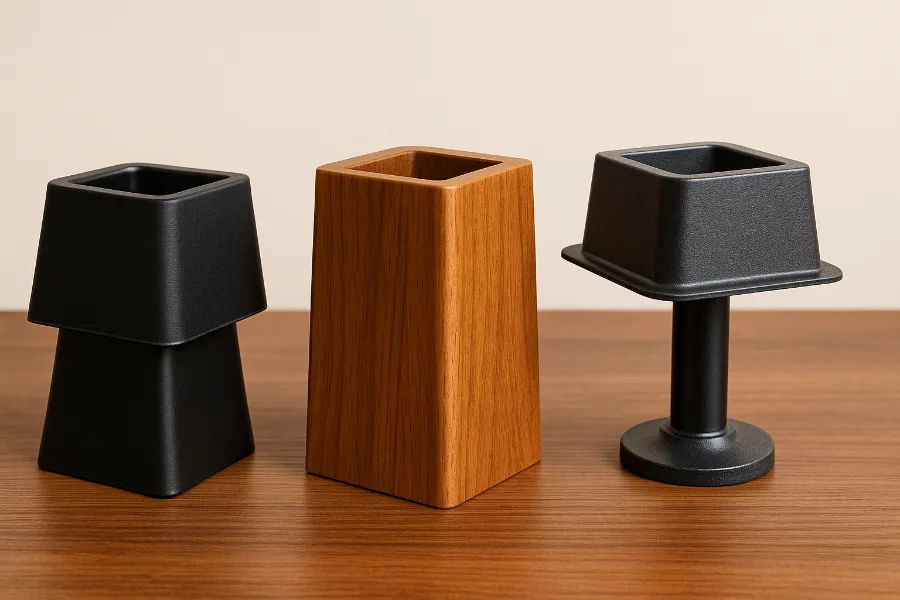
There are multiple advantages:
• More storage space encourages efficient organization
• Improved daily comfort supports mobility and reduces physical strain
• Better airflow contributes to mattress freshness and longevity
• Higher clearance makes cleaning easier
• A raised bed can visually anchor the room more effectively
How to Use Storage Space Effectively
The space under a raised bed becomes most useful when organized intentionally. Rolling bins, vacuum-seal bags for bedding storage, and structured fabric cubes help keep the area neat and functional. This is especially useful for organizing seasonal clothing, spare linens, or items used occasionally.
If storage items should remain hidden, a fitted bed skirt or tailored cover can provide a clean, streamlined look.
Bed Risers and Resource-Informed Living
Using bed risers supports cost-effective space-saving furniture decisions. Instead of purchasing a new dresser or shelving unit, they allow the homeowner to adapt furniture they already have. This reduces unnecessary spending and helps prevent clutter an important principle of organizing a bedroom with limited floor space.
Practical Installation Tips
When installing risers, lift one corner of the bed at a time. Confirm that each leg is seated securely in the riser’s indentation before releasing weight. On hardwood or tile floors, adding felt or rubber pads beneath risers prevents sliding and protects surfaces.
Potential Drawbacks and Solutions
If the bed feels too high after installation, selecting a lower riser height or using adjustable risers can help. If the bed shifts on smooth flooring, rubber stabilizer pads or platform-style risers can increase traction. To avoid clutter under the bed, use labeled or coordinated storage containers.
Final Thoughts
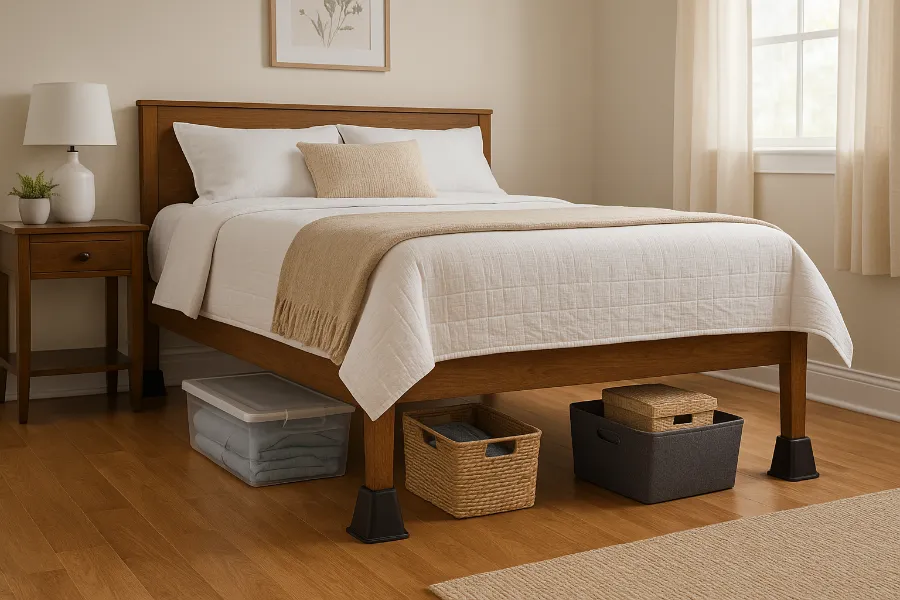
Bed frame risers may be small accessories, but they offer meaningful improvements in comfort, usability, organization, and interior design balance. Whether the goal is maximizing storage space, improving daily mobility, enhancing mattress airflow, or harmonizing room proportions, risers provide a simple, practical, and adjustable solution. With thoughtful selection and installation, they can elevate both the bed and the experience of the room itself.
FAQs
They are used to lift the height of a bed, allowing for easier access and additional under-bed storage space.
Yes, as long as they are weight-rated for your mattress and frame and are installed on a flat, stable surface.
Most risers offer between 1 to 12 inches of additional height, depending on the design.
Yes, but choose reinforced wood or metal risers, as they support higher weight loads more reliably.
Yes, but choose risers with recessed centers designed specifically to hold caster wheels securely.
If your bed has a center support leg or beam, it should also be raised to avoid frame sagging.
Yes, raising the bed can make sitting and standing easier for seniors or anyone with joint discomfort.
Adjustable or stackable risers allow flexible vertical storage without overwhelming the room.
Use risers with non-slip pads or place rubber floor grips beneath them.
You can store clothing, luggage, organizers, or seasonal items — just avoid blocking airflow entirely.



